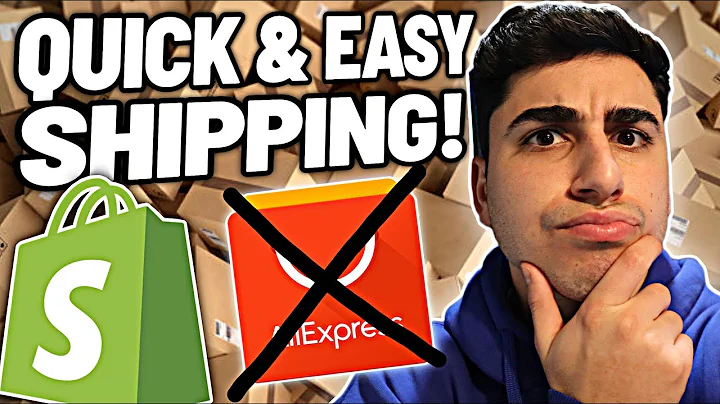The Ultimate Guide to Launching a Profitable Makeup Brand
Table of Contents:
- Introduction
- Finding Your Niche in the Makeup Industry
2.1 Differentiating Your Brand
2.2 Identifying Your Target Audience
2.3 Tapping into Underrepresented Markets
- Producing Makeup Products: Making vs. Manufacturing
3.1 Making Your Own Cosmetics
3.2 White Label Manufacturing
3.3 Manufacturing Unique Formulations
- Sourcing Ingredients and Packaging
4.1 Choosing Skincare-Grade Ingredients
4.2 Ensuring Quality and Safety
4.3 Developing Eye-Catching Packaging
- Meeting Labeling Requirements
- Managing Inventory
- Setting Up Your Online Store with Shopify
- Marketing Strategies for Success
8.1 Targeting Your Niche
8.2 Leveraging Reviews and Influencers
8.3 Harnessing the Power of Social Media
- Cost Considerations and Startup Tips
- Conclusion
How to Launch a Successful Makeup Brand: A Step-by-Step Guide
Are you a makeup lover who dreams of starting your own successful makeup brand and selling your products online? In this comprehensive guide, we will take you through the step-by-step process of launching a makeup brand, from finding your niche in the crowded market to sourcing ingredients, developing packaging, setting up your online store, and implementing effective marketing strategies. Whether you're a beginner or already have some experience in the beauty industry, this guide will provide you with expert advice and real examples from successful beauty brands to help you make your business work.
1. Introduction
Starting a makeup brand may seem daunting, but with the right knowledge and strategies, you can turn your passion for makeup into a profitable business. In this guide, we will walk you through all the essential steps and considerations you need to know to successfully launch your own makeup brand and sell online.
2. Finding Your Niche in the Makeup Industry
The makeup industry is highly competitive, so it's crucial to find your unique angle and differentiate yourself from other brands. In this section, we will explore various strategies to help you stand out, including differentiating your brand, identifying your target audience, and tapping into underrepresented markets.
- 2.1 Differentiating Your Brand: Learn how to make your brand stand out by developing a compelling brand story, ethos, or cause that resonates with your target customers.
- 2.2 Identifying Your Target Audience: Define your target audience by understanding their preferences, demographics, and psychographics to tailor your products and marketing efforts accordingly.
- 2.3 Tapping into Underrepresented Markets: Discover the potential opportunities in targeting customers who are currently underserved or underrepresented by existing beauty brands.
3. Producing Makeup Products: Making vs. Manufacturing
Before you can start selling your makeup products, you need to decide whether you want to make your own cosmetics, white label existing formulas, or manufacture unique formulations. In this section, we will explore the pros and cons of each option and provide practical tips to help you make the right choice for your brand.
- 3.1 Making Your Own Cosmetics: Learn the basics of making cosmetics at home, including finding recipes, experimenting with formulations, and ensuring consistency and compliance with regulations.
- 3.2 White Label Manufacturing: Discover the advantages of white label manufacturing, where you can customize existing formulas and packaging to create your own branded products.
- 3.3 Manufacturing Unique Formulations: If you want to create truly unique makeup products, explore the process of working with a manufacturing facility to develop formulations from scratch.
4. Sourcing Ingredients and Packaging
The quality of your makeup products is crucial for the success of your brand. In this section, we will delve into the process of sourcing skincare-grade ingredients, ensuring safety and compliance with regulations, and developing visually appealing and functional packaging.
- 4.1 Choosing Skincare-Grade Ingredients: Understand the importance of using high-quality ingredients approved for use in skincare and consider factors like organic claims, common allergens, and sourcing certifications.
- 4.2 Ensuring Quality and Safety: Learn how to conduct thorough research on ingredients and suppliers, as well as the significance of third-party audits to ensure the accuracy of claims and maintain quality control.
- 4.3 Developing Eye-Catching Packaging: Discover the impact of packaging on product appeal and functionality, and gain insights into sourcing or customizing packaging options that align with your brand's values and differentiate your products.
5. Meeting Labeling Requirements
Cosmetics are subject to strict regulations regarding labeling, including ingredient listing, weight or volume specifications, and safety or allergen warnings. In this section, we will provide guidance on complying with labeling laws in your country and ensuring clear and accurate product information.
6. Managing Inventory
Managing inventory in the beauty industry can be challenging, considering the shorter shelf life of natural products and the need to store them properly. In this section, we will share tips on inventory management, including avoiding waste, monitoring shelf life, and organizing your products efficiently.
7. Setting Up Your Online Store with Shopify
An online presence is essential for selling your makeup products successfully. In this section, we will guide you through the process of setting up your online store using Shopify, a user-friendly and feature-rich e-commerce platform.
8. Marketing Strategies for Success
To stand out in the saturated makeup market, effective marketing strategies are crucial. In this section, we will explore various marketing tactics, including targeting your niche, leveraging customer reviews and beauty influencers, and harnessing the power of social media platforms like TikTok and Instagram.
- 8.1 Targeting Your Niche: Understand the importance of defining your niche and tailoring your marketing efforts to resonate with your target audience.
- 8.2 Leveraging Reviews and Influencers: Learn how to use customer reviews and collaborate with beauty influencers to build trust and reach a wider audience.
- 8.3 Harnessing the Power of Social Media: Discover the potential of social media platforms like TikTok and Instagram for marketing your makeup brand, and explore strategies to create engaging content that drives conversions.
9. Cost Considerations and Startup Tips
Starting a makeup brand involves financial considerations. In this section, we will discuss the costs associated with starting a makeup line and provide valuable tips on bootstrapping, securing small business loans, and minimizing expenses without compromising quality.
10. Conclusion
In the final section, we will wrap up the guide, emphasizing the importance of passion, perseverance, and differentiation in building a successful makeup brand. We'll also provide encouragement for your entrepreneurial journey and offer further resources to help you continue growing your online makeup business.
With this step-by-step guide, you have all the essential information and strategies to launch your own makeup brand successfully. Get ready to showcase your creativity, passion for makeup, and drive to make a difference in the beauty industry. Good luck on your exciting entrepreneurial journey!
Highlights:
- Learn how to differentiate your makeup brand in a crowded market
- Identify your target audience and tap into underrepresented markets
- Explore different methods of producing makeup products
- Source high-quality ingredients and develop eye-catching packaging
- Understand labeling requirements and manage inventory effectively
- Set up your online store using Shopify
- Implement effective marketing strategies, including leveraging reviews and using social media
- Consider cost considerations and startup tips for a successful launch
- Start your own makeup brand with confidence and passion
FAQ
Q: How much does it cost to start a makeup line?
A: The cost of starting a makeup line varies depending on several factors, including the production method, ingredient quality, packaging, and marketing expenses. While starting from home and making your own cosmetics can be more cost-effective, commercial manufacturing and unique formulations may require more substantial upfront capital. It is crucial to carefully plan and budget your expenses to avoid overspending.
Q: How do I find my niche in the makeup industry?
A: Finding your niche in the makeup industry involves differentiating your brand, identifying your target audience, and tapping into underrepresented markets. By developing a compelling brand story, understanding your target customers' preferences and demographics, and addressing their unique needs, you can carve out a niche for your brand and stand out from the competition.
Q: What marketing strategies can I use to promote my makeup brand?
A: To effectively market your makeup brand, consider targeting your niche audience, leveraging customer reviews and beauty influencers, and harnessing the power of social media platforms like TikTok and Instagram. By tailoring your marketing efforts to resonate with your target customers and creating engaging content that showcases your products' benefits, you can build brand awareness and drive sales.
Q: How can I ensure the quality and safety of my makeup products?
A: Ensuring the quality and safety of your makeup products is crucial for building customer trust and meeting regulatory requirements. Research ingredients and suppliers thoroughly, consider third-party audits, and comply with labeling laws in your country. Additionally, perform quality control checks and properly store your products to maintain their integrity and prevent any potential health and safety concerns.
Q: How can I manage inventory effectively for my makeup brand?
A: Managing inventory in the beauty industry requires careful planning and organization. Keep an eye on product shelf life, store products away from heat and moisture, and develop an efficient system to access and identify your inventory easily. Additionally, consider starting with smaller quantities to minimize waste and monitor inventory levels to ensure you have enough stock to meet customer demands.



















